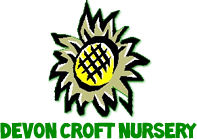Select firm bulbs with no sign of growth from the tip, the bulb should feel heavy for its size. Keep bulbs in a cool dry, airy place before planting, plant as soon as possible after purchase, generally between September and November.
Bulbs benefit from free draining soil, adding coarse sand or grit when planting will help if your soil is heavy. If the bulbs sit wet, they will rot away. Adding some bone meal to the soil when planting will give the bulbs a really good start.
Bulbs should generally be planted twice the depth of the bulb. Ensure that the base of the bulb is touching the soil at the base of the hole and there isn’t an air pocket. Cover with soil and water in if the ground is dry.
Bulbs can be planted in pots in the same way, after flowering leave the foliage to wither and the bulbs can be lifted and replanted in the ground or in pots for the next season.
If planting in the ground, we recommend the use of a bulb planter tool. The tool is pushed into the soil and removed with a core of earth enabling the bulb to be planted easily.
Once the bulbs have flowered, remove only the stems with faded blooms. The leaves need to be left to wither, as it is the energy from these leaves which is returned to the bulb to provide the bulb with the energy to flower again next season. Bulbs will benefit from an annual feed such as bone meal, or blood, fish and bone granules worked into the soil in early spring, as this is a slow release fertiliser which will be easily absorbed by plants and bulbs during growth.

